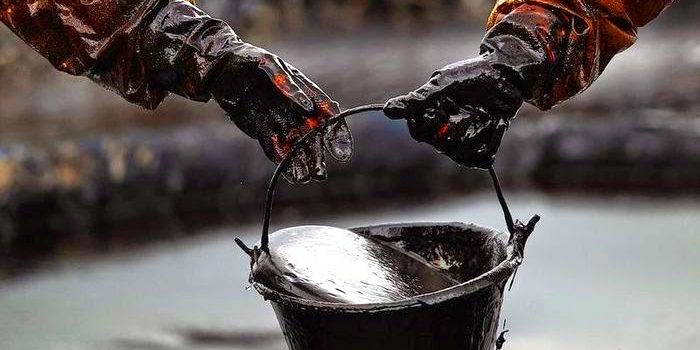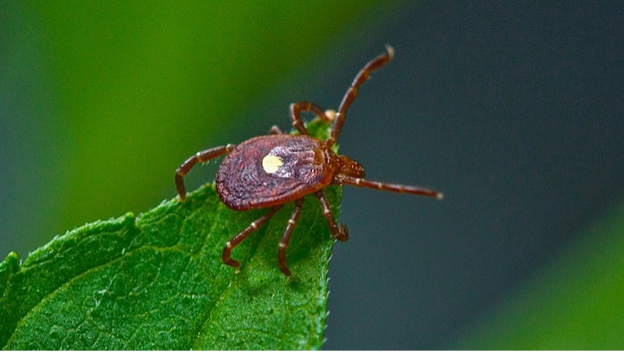Nature has this funny way of warning off hungry beasts when they look around for something to eat. Like well-lit drive-thru menus, Mother Nature’s “Do Not Touch” sign comes in an array of beautiful, neon-bright colors.
Proper labeling—a no-no for fast-food chains—is actually a big part of the food chain.
The Poison Dart Frog comes in a variety of stunning blues, reds and yellows. The toxic Blue-Ringed Octopus sports a number of fluorescent, purplish-blue spots. The deadly Box Jellyfish glows a bright blue, too. Blue is a fairly good indication of poisonous consequences after an ill-advised nosh. Never trust blue food, right?
But blue is just the start. Evolution has served up a cornucopia of “Stop Right There” signs:
The ominous red hourglass of the Black Widow.
The toxic warning of a Monarch caterpillar’s yellow, white and black stripes.
The vibrant, threatening reds and yellows of a various deadly mushrooms.
And now…Fruit Loops.
Yeah, Fruit Loops. And juices and macaroni & cheese and pickles and candies. If you turn over that package and peruse the label of almost anything you buy at a gas station convenience store, you’ll find a color to suit your mood.
And, perhaps, alter it.
With taste-tempting names like Blue No. 1, Red No. 40, Green No. 3 and that mouth-watering additive called “Yellow No. 6,” how could you not want to gorge yourself silly? And what was wrong with Red Nos. 1-39?
Ironically, by cooking up all those colors we’ve unintentionally mimicked nature’s penchant for saying, “See, I told you so.” It turns out that the unnatural array of reds, blues and yellows we regularly eat…may be making us sick. And generations of kids reliant on pharmaceuticals.
Evidence from various studies, plenty of anecdotal evidence from pediatricians and impassioned petitions from concerned parents all point to a correlation between artificial dyes and hyperactivity in children. In fact, some doctors and parents simply remove Red No. 40 from the diet of an ADHD kid and, voilà, the condition subsides. They say it’s like turning off a light switch.
That’s why the FDA finally reviewed its long-standing, unequivocal defense of artificial coloring and its widespread use in foods and drinks of all kinds…particularly in those products targeted directly at children. Just keep on doing studies and signing petitions and, eventually, the FDA will have to convene a panel, right?
And, guess what? It’s safe!
The ethically squishy FDA is completely comfortable with these vibrant chemicals and the bizarre fact that many are made from petroleum products. The panel rejected warning labels by a vote of 8 to 6, and also rejected the basic premise that there is any evidence of a link between hyperactivity and artificial food dyes, despite the claims made in a 2007 article published in the British medical journal Lancet. In fact, two studies sponsored by the British government linked artificial coloring and preservatives with hyperactivity in children. Those conclusion-jumping Brits asked food producers to halt the use of chemical colors and even petitioned the European Parliament to require warning labels.
But fear not, American consumer. The FDA has spoken.
Bright chemical colors are A-OK with the FDA. The makers of Blue No. 1, Red No. 40 and colorfully-speckled Cool Ranch Doritos can keep on churning out their festive products. In fact, they should buy stock Novartis Pharmaceuticals. They make Ritalin, which treats hyperactivity. Financially, it could be and, perhaps all already has been, a big “win-win.”
That’s “smart investing,” American style.
Yet, the Yellow No. 1 Canary in the coalmine might come from an unlikely source—Kraft Macaroni and Cheese. Despite this ongoing indifference of the FDA toward another potentially harmful chemical, Kraft Foods, Inc. is increasing the number of products it makes without the use of artificial colors. You can now buy Mac and Cheese that doesn’t glow with an unearthly tint of highway safety yellow. Kraft is moving to meet a “growing demand” for foods that don’t resemble the colorful, poisonous warnings so commonly found in nature.
Perhaps Kraft, which probably has done far more research on these colors than the FDA or the corporately-sponsored science departments found in universities, is not just anticipating a growing market, but, if they are smart, heading off more independent science from Europe or US public interest groups. It might be more than just a classy move. It might be a move to avert future class actions.
If these dyes are harmful to even a small percentage of “susceptible” children, why would anyone risk feeding it to children at all? Or to themselves? Don’t we now have adult ADHD? And what if we learn later that petroleum-based chemicals are, in fact, not a good thing to eat or drink? And why don’t we know that now?
As with everything in 21st Century America, you are not just what you eat, you are what you buy. When you are out there hunting down some pre-packaged, pre-formed and woefully over-prepared dinner, do what the rest of the world’s beasts do—look at the label.
Some colors are too good to be true and, perhaps, too harmful to be eaten.
Tweet





'Pretty Food is Dangerous' have 10 comments
April 12, 2011 @ 9:34 am xxxevilgrinxxx
Red dye makes me insane, so yes, definitely good to stay away from that. Yellow isn’t good either and when something is orange, that’s a sign to run – rash and insanity, oh joy!
April 12, 2011 @ 10:00 am Parks McCants
A well writen account of the impact artificial food color has on a largely unsuspecting consumer. With an unprecidented rise in cancer as well as Autism in children, my hat is off to Craft Foods, as well as other manufactures that now offer a healthier choice for the concerned consumer.
Thank you J.P.
April 12, 2011 @ 10:00 am sharon
I like this one, have had more than suspicions about fake, and altered colors with foods… prefer those without
Go Brits! thanks for cluing me in on this one…about as political as I can stand….
April 12, 2011 @ 12:01 pm admin
Thanks…tip of the iceberg.
Watch: http://www.youtube.com/watch?v=rixyrCNVVGA&feature=youtube_gdata_player
April 13, 2011 @ 6:38 am Laura
When the boys were little, if they ate anything with artificial color–cotton candy and “froot by the foot” were the big culprits–their poop, to be be so crude, was NEON green. (Note, this stuff was not being fed to them by me…usually Grammy.) The body wants to expel this stuff. We try to avoid as much artificial dye as possible.
Another perspective, as an educator…we are expecting WAY too much in school of kids today. Last night my fourth grader did not finish homework until around 8:30, and he started right after school. Standards are way too high–compound interest calculations and a survey of all the major tenets of world religions in the sixth grade, really? We had to skip gymnastics class last night–the one time to channel normal childhood energy positively. The education system is feeding into the need for uppers in the form of sugar, caffeine, and food dyes, which in turn creates a need for ADHD medications, just for kids to cope with the unrealistic expectations that have been foisted on them by society–the education system, the consumer industry, and the information age.
I applaud Kraft and the European research. European culture has always striven for a more balanced approach to life than American culture. It’s time we slowed way down and looked to nature as our cue for how to live our lives–color and all.
April 13, 2011 @ 5:12 pm Tom O'Neill
J.P. has a gift for taking our minds where they would not get on their own. As one who has spent lazy afternoons snorkeling amid coral reefs, I can testify there are things underwater that look like gaudy miniature show-boats, multi-colored and seemingly designed by Disney. I and every other living thing down there gave them wide berth–convinced that anything that visible and unapologetic about its presence would never have survived unless it was poisonous as hell.
To take the play of this universal instinct and transfer it to the food off the shelves –where the hand of the advertiser is so visible in the dazzle of the food–is quite a stroke. One is suddenly awake, and wants freedom from the advertiser and deliverance by a government that seems long since to have drifted into sleep. Nice work, J.P.!
April 23, 2011 @ 8:52 pm Colorful Food Not So Nice | Mystic Scholar
[…] https://newsvandal.com/2011/04/pretty-food-is-dangerous/ Print PDF likebot_bgcolor = ''; likebot_url = 'http://mysticscholar.org/?p=5087'; likebot_type = 'horizontal_thumbs'; […]
January 21, 2013 @ 2:27 pm Half a Coke and a Smile? : Newsvandal
[…] Perhaps the simple answer to the education crisis is our damaging diet of junk food, chemicals, colorings and high fructose corn […]
January 28, 2013 @ 4:45 pm Coca-Cola’s New Ad Campaign Desperately Downplays Its Role In The Obesity Epidemic | Blog Feeds
[…] Perhaps the simple answer to the education crisis is our damaging diet of junk food, chemicals, colorings and high fructose corn […]
May 16, 2013 @ 11:54 am Coca Cola
[…] Perhaps the simple answer to the education crisis is our damaging diet of junk food, chemicals,colorings and high fructose corn […]